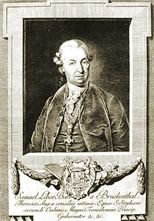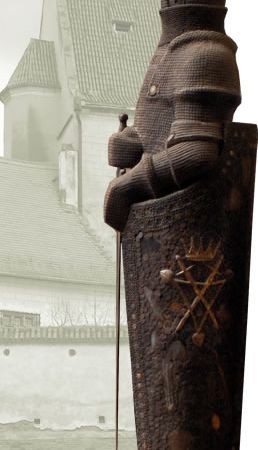The city of Sibiu is not only one of the most beautiful in Europe, but unfortunatelly one of the least known among tourists passionate about discovering new countries and customs. But those who had discovered Sibiu over the years have returned here time and time again, as you just can't get enough of it's riches, monuments, culture and history.

Sibiu is also special because of it's several museums, all of them both cultural landmarks and exquisite architectural creations. In Hermannstadt, as the city is also called, there are no more, no less than 10 institutions, housing from art collections to archaeological discoveries, antropology and history collections or presenting the history of technology and natural scinence. It is no wonder that Sibiu was chosen as the European Capital of Culture in 2007.

 | The most important and the most popular is without a doubt the Brukenthal Museum, actualy a complex of six museums with different locations and programs. The Brukenthal was opened in 1817, being the second oldest museum in Europe, a record of which the locals are really proud. The museum takes it's name from Samuel von Brukenthal (1721 -1803), a scholar and art lover of German origin, who started collecting paintings after becoimng chancellor of Transylvania. He also collected books, coins and other various items, bulding in Sibiu a large Palace, which acording to Brukenthal's will became a public museum, together with most of it's treasures. |
In Hermannstadt you can also find the Art Gallery and the Brukenthal Library. The rich collection hosted by the Art Gallery has it's origins in the collection of Samuel von Brukenthal, and nowadays it includes works by famous artists from the Flemish and Dutch School, German and Austrian, Italian, Spanish and French, thus building a history of the European art world in the 15 - 19th century. Other than the paintings, the museum can boast with a huge collection of prints and engravings, many of them unique, real masterpieces of tremendous documentary and artistic value. The collection could not be complete without several hundered drawings, watercolours and engravings made by famous Romanian artists, such as Theodor Aman, Stefan Luchian, Nicolae Tonitza and many others.
On the other hand, the Brukenthal Library is one of the best of it's kind, as it began with the volumes purchased by Baron Brukenthal, an avid reader and conaisseur, who bought over 15.000 books, most of them beautifully printed. This initial collection was greatly enlarged over the next years, as the number of incunabula grew from 76 to over 350. Now the total number of volumes is estimated to be around 280,000, and many of these are of great value. The Brukenthal Library also has many manuscripts, as well as extremely rare editions of famous books.
You could continue your cultural trip to Sibiu with a visit to the Museum of History, on Str. Mitropoliei 2. The Museum has been hosted since 1959 on the ground floor of the Brukenthal Palace, moved moved into the former Town Hall buildings in 1984. This museum has several sections, from numismatics (almost 60,000 coins and medals from Greek and Roman ones to Transylvanian) to archaelogy, arms and armours (one of the best in Europe, with more than 1900 pieces), documents, textiles, seals and prints and many others. It would take several days to discover the riches which are kept here, and luckily the Museum of History (in fact all museums) has competent guides. |  |
Another Museum is the Museum of Natural History, on Str. Cetatii 1, one of the richest and oldest of this kind, with almost one million pieces. It was founded in 1849 and has been hosted in this building since 1895. At first it had important collections of flowers, birds and ethnography, mainly from Oriental countries. After WW2 the collections were enriched by and entomology collection, insects, butterflies and palaentology collections, the museum receiving also several important private donations.

The Pharmacy Museum in Sibiu is located in Piata Mica 26, in a historical building, dated 1569, which makes it one of the oldest pharmacies in Romania. The ample exhibition is organised like a pharmacy, with two laboratories, one homeopathic sector and one documentation sector, containing over 6000 medical instruments. It also has a reconstructed shop, with wooden counters, glass jars and wooden jars, many of them several hundred years old. There are more than 7000 items, narating the changes and development in pharmaceutical techniques in the 15 - 19th century, together with a rich homeopathic collection.
There are also the ASTRA Museums - four ethnography and anthropology museums - with rich and fascinating collections, as well as a small but interesting Steam Locomotives Museum, opened in 1994, with 40 steam locomotives in it's collection.
Sibiu has many other atractions and treasures, as everyone of these museums must be discovered slowly, over the course of many visits, as the whole city should be.
Photos : artline.ro, sibiu.ro
Sibiu City Hall Web Page

































